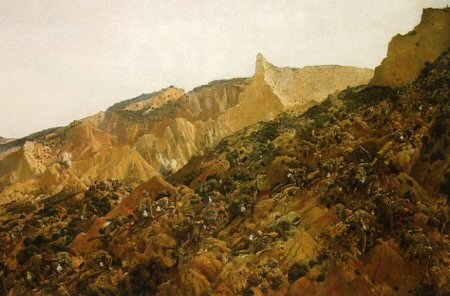In the Old Chapel graveyard there is a family plot belonging to the O’Hare family. It is close to the spot where my wife’s family is interred. When we would go to visit that grave…
Beach landing at Gallipoli
… I always made it my business to visit the O’Hare plot and say a prayer because they all seemed so young to have died. They died within a matter of days of each other in October 1918.
They were the children of James McArdle, Soho Place, Newry. His wife, Margaret, (nee O’Hare) had died some years previously and a son, John, 18, had died in February of 1918. Whether or not this was from the first wave of influenza of that fateful year, I do not know.
In October influenza began taking its toll. No family was safe from the virus and the O’Hare family was no exception. Margaret (Rita) aged 20 died on the 24th October and her brother James, aged 16, died on 25th October. They were buried on the 26th October. But worse was to follow for the poor father as his eldest surviving son, James aged 22, died on the 27th and was buried on the Tuesday to lie alongside his Mother and two brothers and sister. One can only imagine the heartbreak that that family had gone through.
But of course they were not the only ones. In the last week of October no fewer than thirty-five people were interred in the Old Chapel graveyard. Almost all died from influenza. There were many other sad stories from that time. Mr. John Lee from Bessbrook, and his wife were interred at Carrickcruppen. They left two young children. A young soldier, Private P. Curran, home on leave from the trenches, died in his mother’s home in Cowan Street. He was buried in the Old Chapel cemetery with full military honours. All over the north east came more and more reports of the devastation the disease was causing to families. In December, in Crossgar, Co Down, Jenny Ringland aged 17 died. She was the fifth child of the family to die from influenza. The peculiarity of the disease was that it targeted young adults in particular. The list went on and on.
There were many strange remedies advocated to combat the epidemic. The Frontier Sentinel informed its readers;
‘While the public must take every necessary precaution, there is no cause for alarm….the way to combat it to a large extent is by maintaining a spirit of cheerfulness.’
Meanwhile O’Hagan’s Chemists were offering their cure, ‘Quinine and Iron Tonic -It restores the appetite, gives colour to pale faces, braces the nerves, cures anaemia, and bloodlessness, and is as useful to the aged as to the young.’
At least 20,000 people died from the influenza epidemic in Ireland. Although it was just a small part of the 40 to 100 million who died world-wide, to a small country like Ireland it represented an awful lot of people.
It is now known that, in a short space of time, more people died from the disease than died in the 1914-1918 war.
